In the summer of 1896 a prospector named Skookum Jim discovered gold in Rabbit Creek which runs into the Klondike River, in Canada’s Yukon. The claims were registered at a camp called Forty Mile, because it was forty miles from Dawson on the Yukon River.
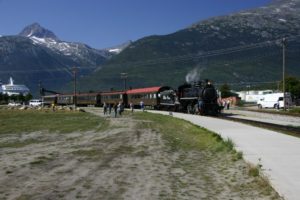
Miners from Forty Mile raced to the new site to make claims for themselves. Word got out but it was the arrival of a steamer in Seattle with a large quantity of gold the set off the gold rush. But it was a couple of years before the mob of prospectors descended along the Klondike River staking claims along 150 km of the river.
Getting there was the major problem. One of the popular routes would see a steamer sailing into the Lynn fjord, commonly called the Lynn Canal although there is nothing about it relating to a canal. They disembarked where the town of Skagway is located. From here
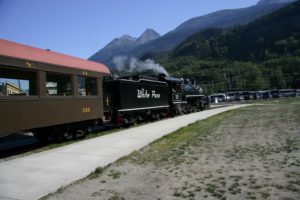
it was necessary to climb through the steep mountain gorge, over White Pass, into Canada. The trail was rough, narrow and extremely dangerous. Pack horses fell from the ledge and died by the thousands, and people perished too from the cold and hunger of the trail.
The Canadian government used the Mounties to enforce the requirement that the prospectors had to carry with them a tonne of supplies to carry them through the winter until they could fend for themselves. However, moving a tonne of supplies up and over the pass meant a lot of trips back and forth, and it was difficult to guard the supplies the burdened men left cached at the other side of the pass.
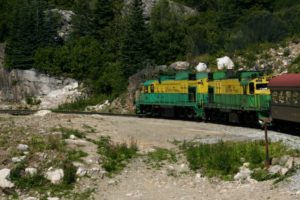
View along the route.Entrepreneurs began dreaming of a railroad to carry people and supplies over the pass. Michael Heney, born in Ontario, Canada, teamed with financiers from England to build the impossible, a railway to the stars. Heney’s study of the steep canyon made him realize that a narrow gauge railway was what he needed. A narrow gauge could manage sharper turns than the wider traditional track and the roadbed was cheaper to build. From Skagway the tracks would climb to 900 metres in 30 kilometres with up to 4% grades and 16 degree curves.
Time was of the essence. If they were to capitalize on the traffic to the Klondike gold fields they had to be quick. Gold rushes traditionally did not last very long. Even so, it wasn’t until 1899 that tracks reached Bennet, and by the next year there were tracks into
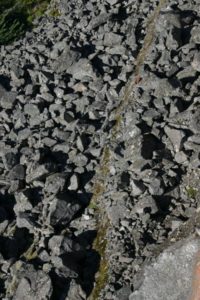
Carcross. Even so, the gold rush was slowing, but the railway carried heavy freight to big mining companies. But the times became worse and the trains stopped in 1982.
The Lynn Fjord’s scenery brought an increasing supply of tourists on cruise ships and in 1988 the White Pass & Yukon Railway opened for business from Skagway to White Pass. Later trains reached Carcross. Passenger traffic reached 360,000 tourists during the 2010 tourist season.
It’s no wonder either. The train is one of the top favourite things to do while in Skagway. The views of the mountains from the train are terrific. The staff are pleasant and willing to explain about things that you are seeing. The sight of the old trail used by the early would-be prospectors brings exciting twinges of the hardships those people endured. The best reason for going, amidst all this history and beauty, is the relaxing ride!
Happy RVing !
This is in one of the tours in ‘Canada: Beyond the Far Horizons’ a Touring North America guide book).
For more than four decades James Stoness has travelled the roads of North America, photographing and writing about what he has seen. His travel articles and beautiful pictures have been published in several magazines and newspapers. He is also the author of five western novels.
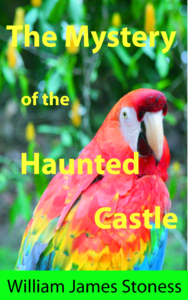
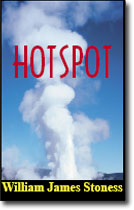
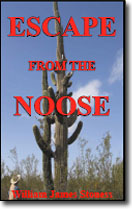
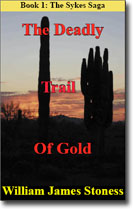
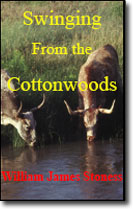
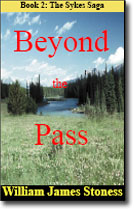
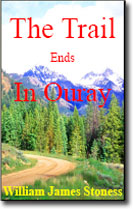
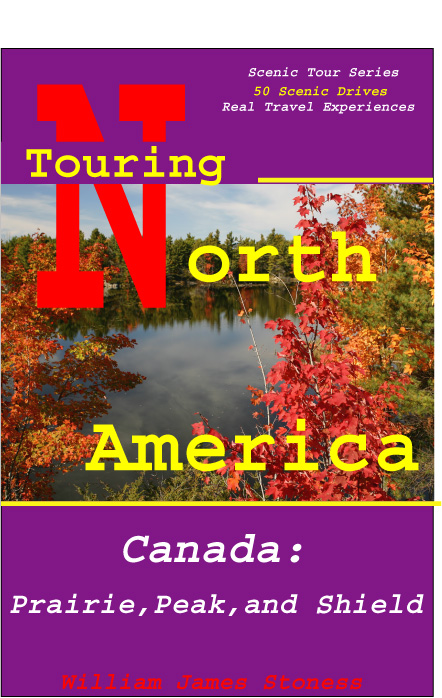

Recent Comments